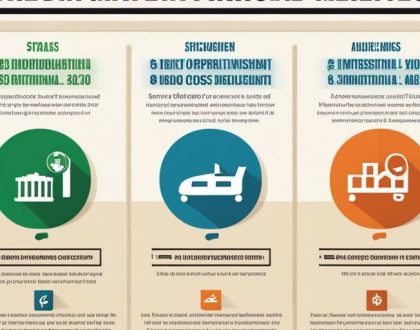Changing Banking Landscape

Reflecting on the Transformation after the Global Financial Crisis
Introduction: Reminiscing the 2007-2008 Global Financial Crisis
The lasting impact of the 2007-2008 Global Financial Crisis (GFC) still reverberates in our memories. It was a period marked by the precarious state of banks, with many of the world’s largest financial institutions and insurers requiring substantial taxpayer-funded rescues. As the crisis cascaded across economies, even automotive giants and sovereign nations faced existential threats. A significant trigger was the extensive investments in mortgage-backed securities by banks, all backed by misleading top-tier credit ratings, only to reveal the instability of these property loans. The interbank market collapse and the subsequent Eurozone crisis even impacted banks that had never ventured into US mortgage-backed securities (MBS). Public outrage was immense, with banks accused of gambling recklessly under the guise of implicit state-backed rescue guarantees.
The Era of Reforms: A Paradigm Shift in Banking
In response, regulatory bodies and lawmakers clamored for a radical overhaul, demanding a separation between speculative trading and deposit-driven commercial banking. Their focus was on safeguarding depositors from losses during a bank run and preventing sovereigns from becoming the ultimate underwriters of these deposits at taxpayers’ expense. Capital buffers were strengthened, monitoring was enhanced, and standardized risk weightings were imposed on banking activities. Activities deemed riskier, like speculative stock trading or highly leveraged loans, required higher capital reserves or were outright severed. Astonishingly, bankers who had overseen the largest destruction of wealth since the 1930s remained largely unscathed, with many receiving bonuses despite the spreading unemployment.
The Shift to Safety: A Safer yet Less Daring Banking Landscape
Post-crisis, banks underwent a transformation, opting for a more conservative approach. The objective was to prioritize safety and minimize risk, even if that meant shedding some of the high-stakes, high-reward activities synonymous with pre-crisis banking. This transition led to banks being safer but inherently less captivating.
The Rise of the Shadow Banks: An Unintended Outgrowth
While the primary focus was on reigning in conventional banks, an alternative network of shadow banking sprang up. These entities, operating outside traditional banking boundaries and often devoid of regulations, undertook roles that conventional banks had become cautious about. However, these regulations inadvertently paved the way for the ascent of shadow banking, creating an intricate web of financially linked activities that evaded transparency and regulatory scrutiny.
Government Bonds’ Role and the Ripple of Interest Rates
This segment delves into the notion of government bonds as “risk-free” assets and the repercussions of surging interest rates on banks’ stability and profitability. While these bonds were seen as secure havens during the GFC, the crisis revealed their vulnerability in certain cases, as witnessed with nations like Greece, Ireland, and particularly Italy.
Navigating the New Normal: Adapting in a Shifting Landscape
With stringent regulations impacting traditional banking operations, financial institutions embarked on a quest for new revenue streams. Asset management and private banking emerged as bastions of stability, offering consistent income sources. However, these areas also encountered challenges. The ascent of exchange-traded funds (ETFs) disrupted the status quo, providing investors with automated, cost-efficient alternatives to conventional asset management strategies.
Italian Intrigue: The Windfall Tax Effect
Scrutinizing the repercussions of Italy’s surprise imposition of a windfall tax on banks, we explore how this maneuver disrupted the financial sector, induced stock market volatility, and left investors skeptical. The tax, introduced without prior consultation, underscored the delicate equilibrium between taxation, stability, and investor confidence. Despite later clarifications on tax limitations, the trust damage was already done.
Conclusion: Navigating the Unknown Terrain of Modern Banking
In conclusion, we reflect on the intricate balance between stability and innovation in the financial realm. While recognizing that unexpected twists can reshape the industry in unpredictable ways, it’s imperative to ensure that the pursuit of safety doesn’t stifle innovation. Regulatory measures must remain adaptable to the ever-evolving financial landscape.
Clarifying the Evolution of Banking Landscape
Why have banks become safer yet less adventurous post-Financial Crisis?
The aftermath of the crisis spurred extensive reforms and regulations to bolster stability. However, these changes led to a reduction in risky activities, making banks safer yet less daring.
What were the unintended consequences of stricter regulations for banks?
Stricter regulations pushed banks to curtail their investment banking and trading activities, opening doors for non-traditional players to enter the market.
How did government bonds play a role during the Financial Crisis?
Regulatory authorities considered government bonds as “risk-free” investments for banks. However, in some cases, these bonds posed stability risks, as seen with countries like Greece and Italy.
How did rising interest rates impact banks?
Rising interest rates altered banks’ business models, affecting the value of low-yield bonds and challenging the conventional banking paradigm.
What were the outcomes of Italy’s windfall tax on its banks?
The sudden windfall tax triggered uncertainty in the banking sector, causing investor concerns and disrupting normal banking operations.
Recommended Posts

Financial Aspects of Doing Business in Malta
July 26, 2024

Casino999.dk & Delasport Enhance Sports Betting
July 26, 2024

MightyTips & Merkur Bets Enhance German Betting
July 26, 2024


